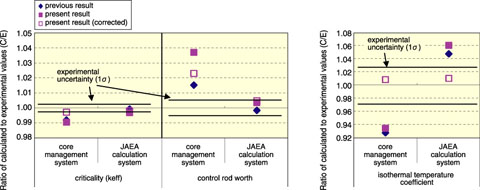
Fig.12-1 Calculated/experimental (C/E) values of neutronics characteristics

Fig.12-2 Reactor power and coolant temperature transient
The prototype fast breeder reactor “MONJU”restarted operation on May 6, 2010, and reached criticality on May 8, 2010. Fourteen years and five months have passed since the sodium leakage on December 8, 1995, from the secondary cooling loop. The system startup test (SST) is planned to be conducted, and it consists of three tests: Core Confirmation Test (CCT), 40%-power Confirmation Test, and Power Rising Test. The 78-day CCT, which involves 20 test items including confirmation of the safety criteria and measurement of several core performance data, ended on July 22, 2010.
In the CCT, basic neutronics characteristics were determined, for example, the criticality and control rod worth. We confirmed that the core characteristics satisfied safety criteria such as those relating to the excess reactivity and reactivity shutdown margin. Furthermore, tests to acquire core characteristics data for R&D were carried out, for example, the flow rate coefficient, isothermal temperature coefficient, feedback reactivity, applicability evaluation of subcriticality measurements, and characterization of the ultrasonic sodium temperature sensors. In addition, dose rate distribution, impurity content of the coolant and cover gas, and flow coastdown rate of the primary pump were measured.
The fuel loaded in the CCT core contained 241Am owing to the decay of 241Pu as a result of long-term shutdown. The average 241Am content of the core was 1.5 wt%, and therefore, it was expected that the exact calculation of the criticality would be difficult. The calculation accuracy was confirmed by the CCT physics data. Results are shown in Fig.12-1. In the JAEA calculation system that we developed for R&D and for the design of fast breeder reactors (FBRs), etc., the calculated values agreed with the measured values within 1σ. It was confirmed that the values calculated by the core management system for “MONJU”, corrected based on measured values, is in good agreement with the measured values. The feedback reactivity evaluation result is shown in Fig.12-2. The reactor power increased after reactivity insertion owing to control rod withdrawal. Because of the negative feedback reactivity resulting from the Doppler effect etc., the reactor power decreased 20∼40 min after reactivity insertion and stabilized.
The SST of “MONJU” was reconducted, and valuable basic data were acquired for FBR development, for example, reactor physics data of the core, which contains a large amount of 241Am.
These data will be used for R&D, such as that discussed in Topic 1-7(p.17).
<Previous: 12 Development of Experimental Techniques / Facilities at JAEA R&D Centers | Next: 12-2 >